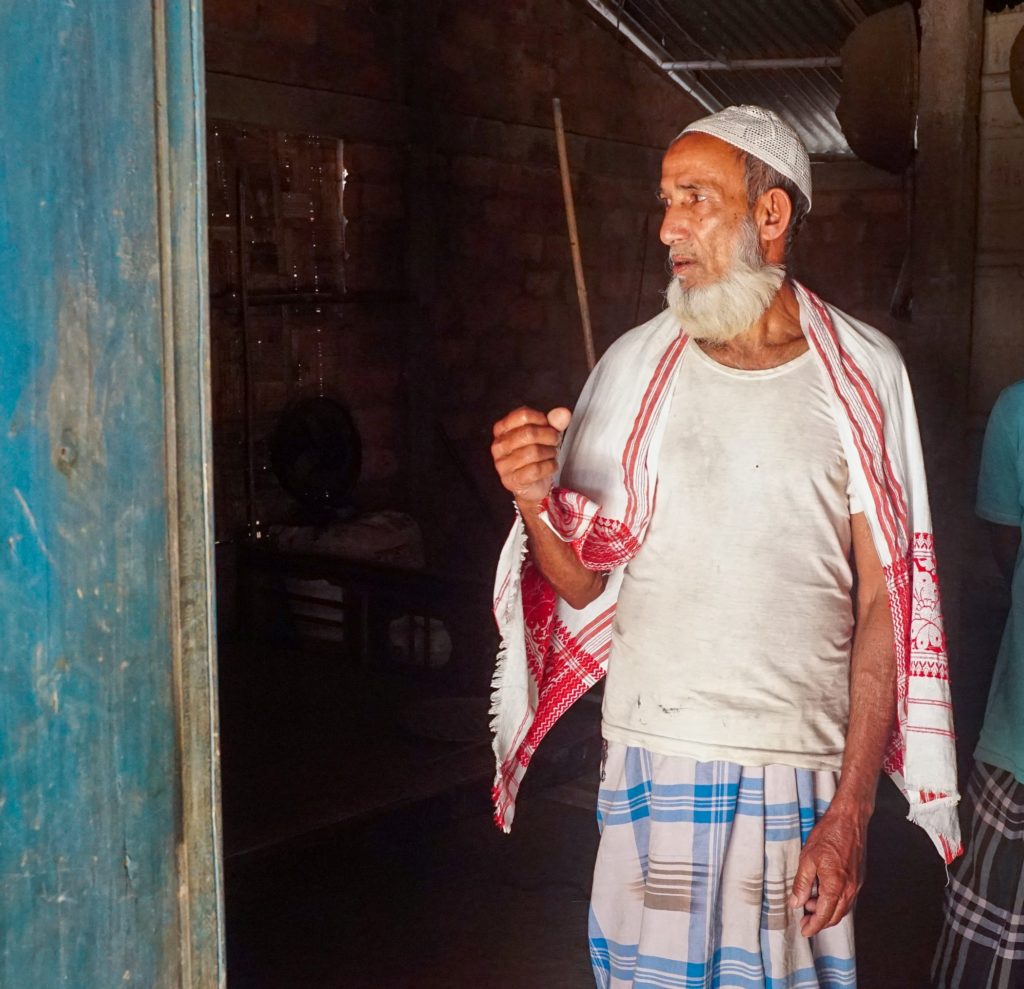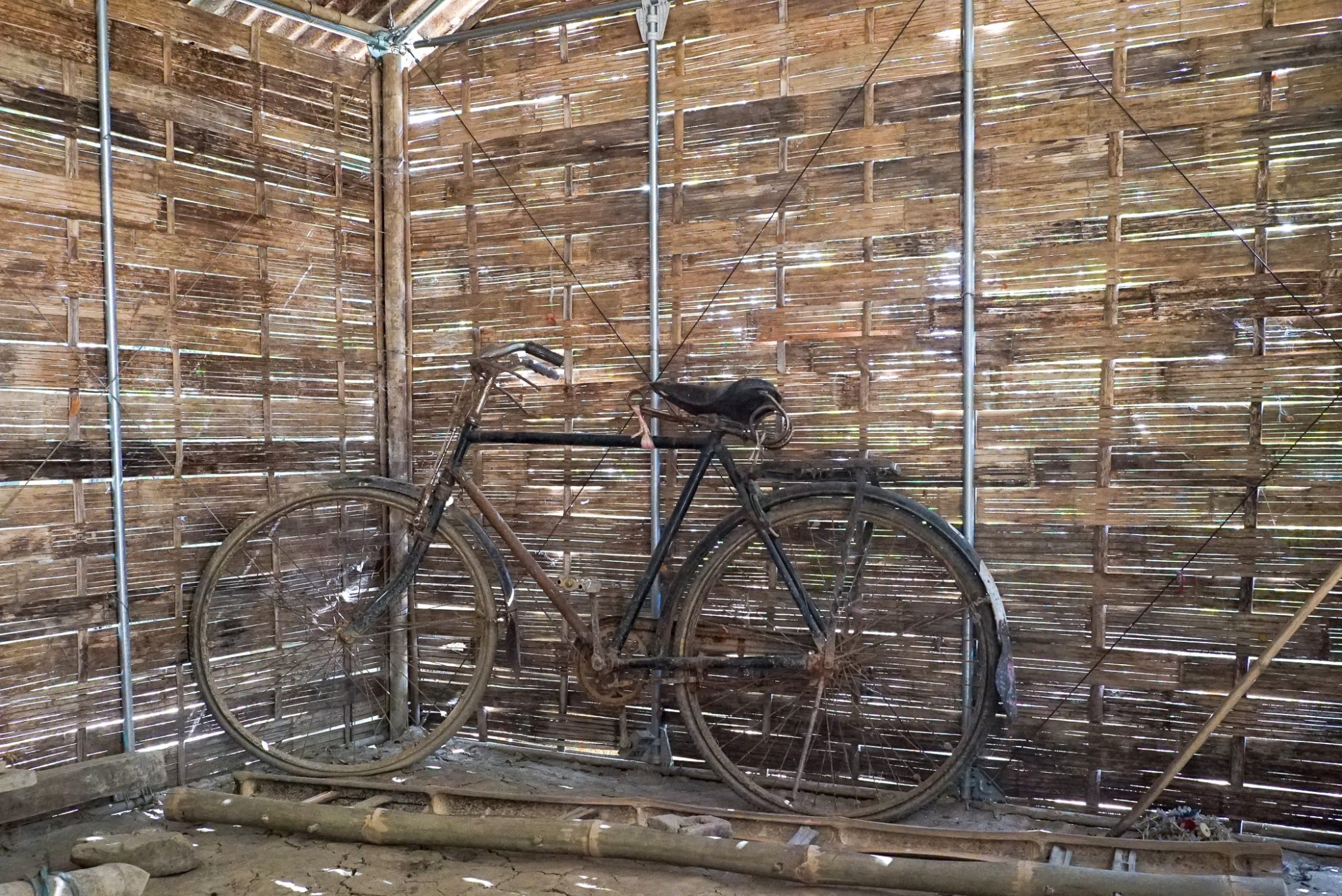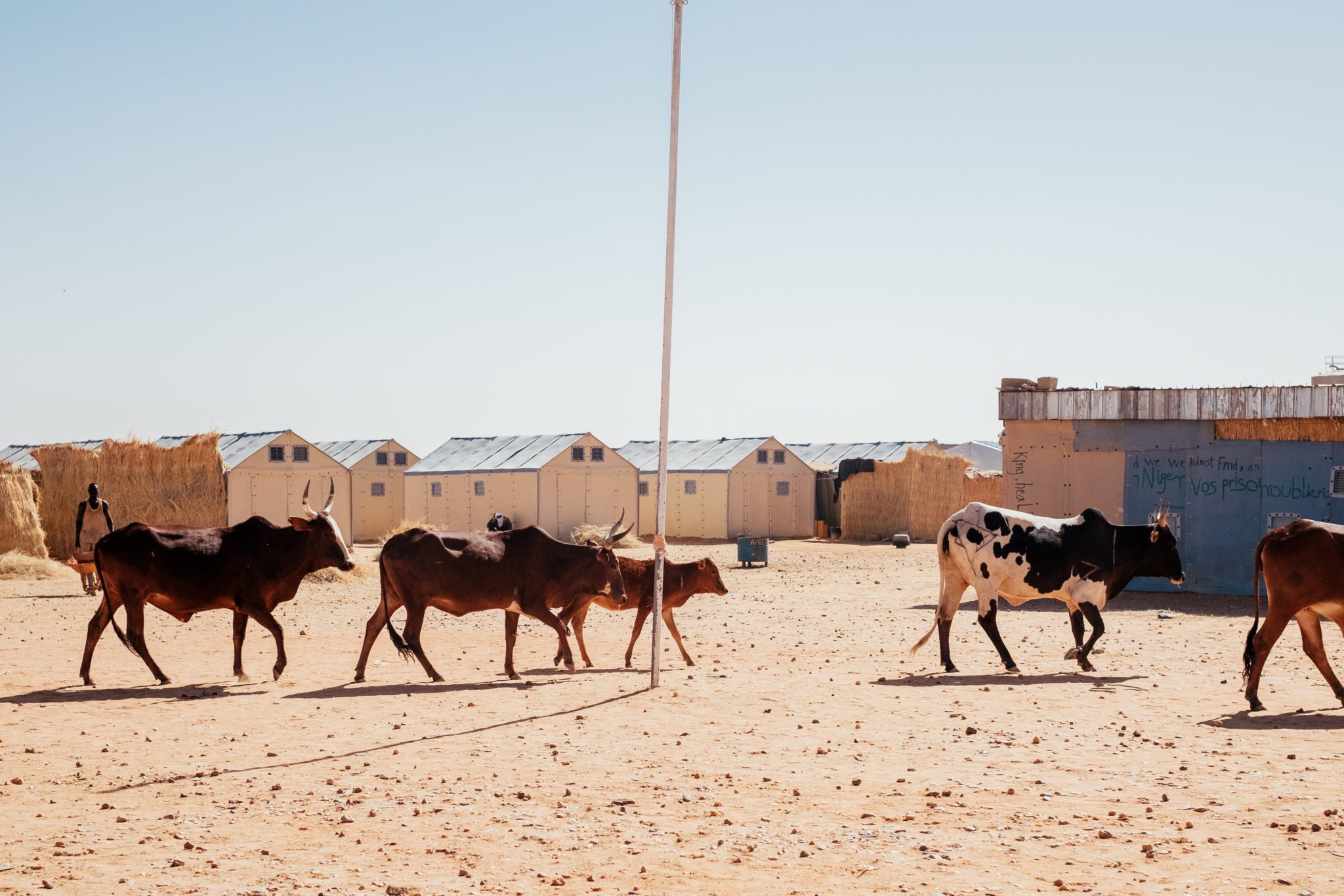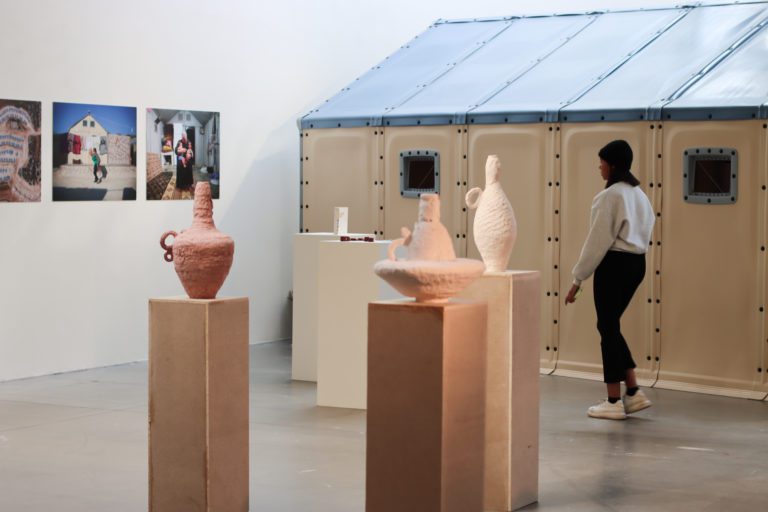In a tranquil, shaded meadow, the sun’s gentle rays filter through the lush forest of palm trees, betel nut trees, and bamboo. Various kinds of basil grow here, alongside bushes adorned with the white crape jasmine, integral to many Hindu rituals.
A black baby goat grazes on leaves and grass between the trees, and now and then, it lifts its head and gives away a high-pitched baa. In the distance, the autorickshaws’ constant beeping underscores the otherwise serene surroundings.
Standing in the clearing are two houses facing each other: a brick building where Md. Niyazuddin and 63, and Shirifa Khatun, 56, live. They started building on it in 2007 but needed more money to finish it.
Flowing 900 km through the northeastern Indian state of Assam, the Barak River annually overflows its banks. However, in 2022, flooding wreaked havoc, affecting 5.4 million people and claiming 200 lives. Large swathes remained submerged for weeks and months.
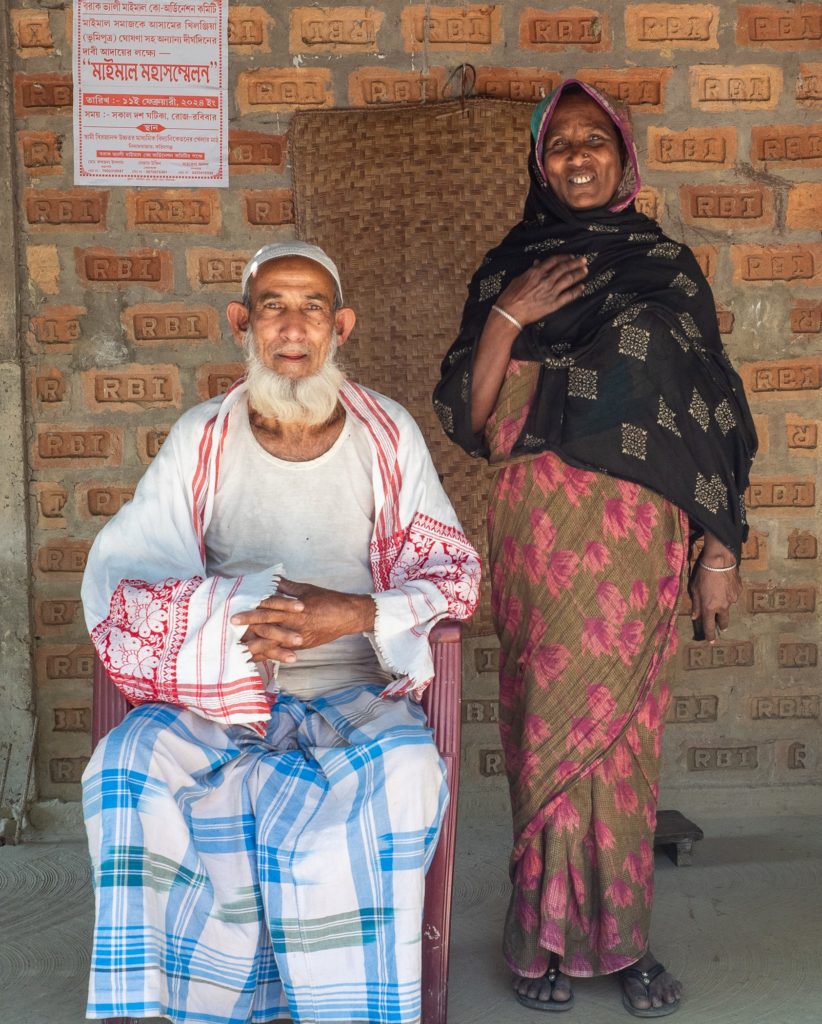
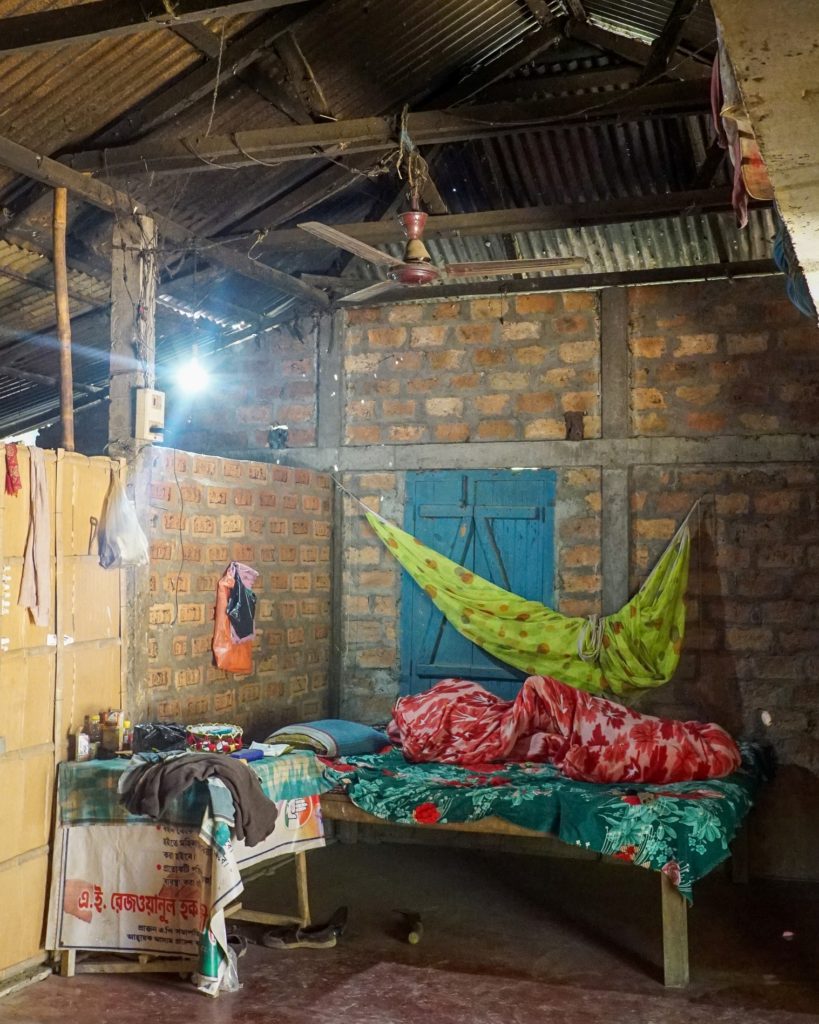
The couple, along with numerous others, were forced to evacuate, returning to find their bamboo home destroyed. Their unfinished brick structure weathered the flood.
Building stronger communities after the disaster
Better Shelter’s longstanding partner, the Indian NGO SEEDS, provided relief and transitional shelters from Better Shelter as immediate support to the affected community. Under the long-term recovery program, SEEDS retrofitted three public health centers, repaired and retrofitted schools and constructed ten terra filters for safe drinking water to the community.
Their approach for the shelter intervention was to ensure owner driven construction, so that the people would learn how to build, and maintain their homes.
One of the households receiving a shelter was Md. Niyazuddin and Shirifa Khatun, which they constructed on a high plinth to avoid it being damaged in future floods. SEEDS collaborated with the family to clad the walls with woven bamboo panels and coated them with a mixture of mud, cow dung, and straw. Locally sourced tin sheets comprise the roof offering sturdy protection.
“When SEEDS supported us with a shelter, we learned basic masonry and building techniques.”
Shirifa Khatun
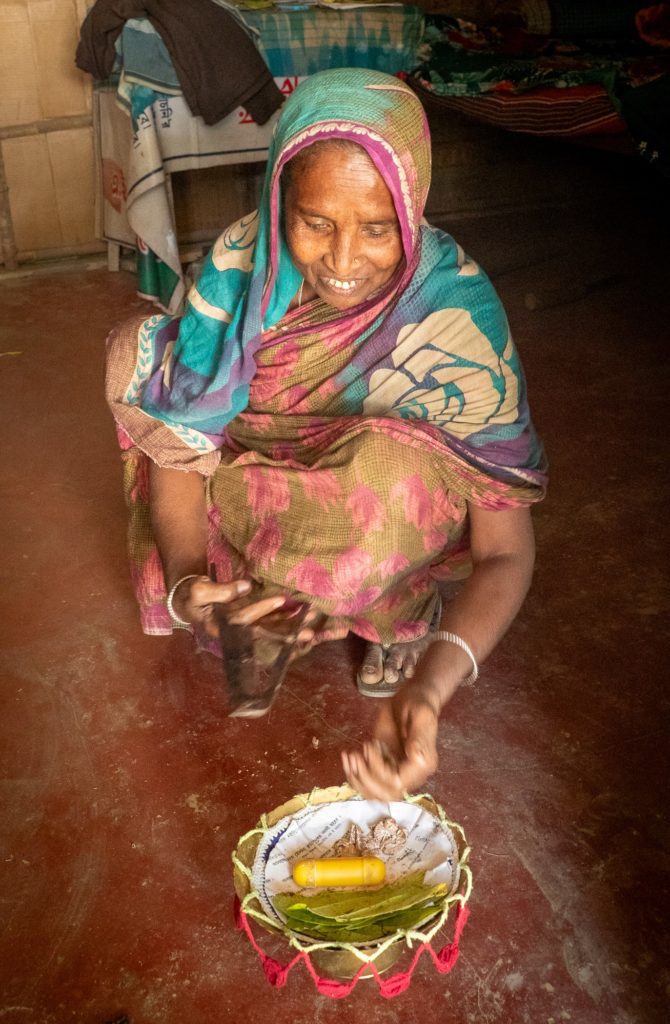
At the same time, SEEDS enrolled the couple in the government’s shelter program, which eventually granted them the equivalent of 1800 EUR to complete their 55-square-meter (600-square-foot) brick house.
One year ago, they finally settled into their new permanent home.
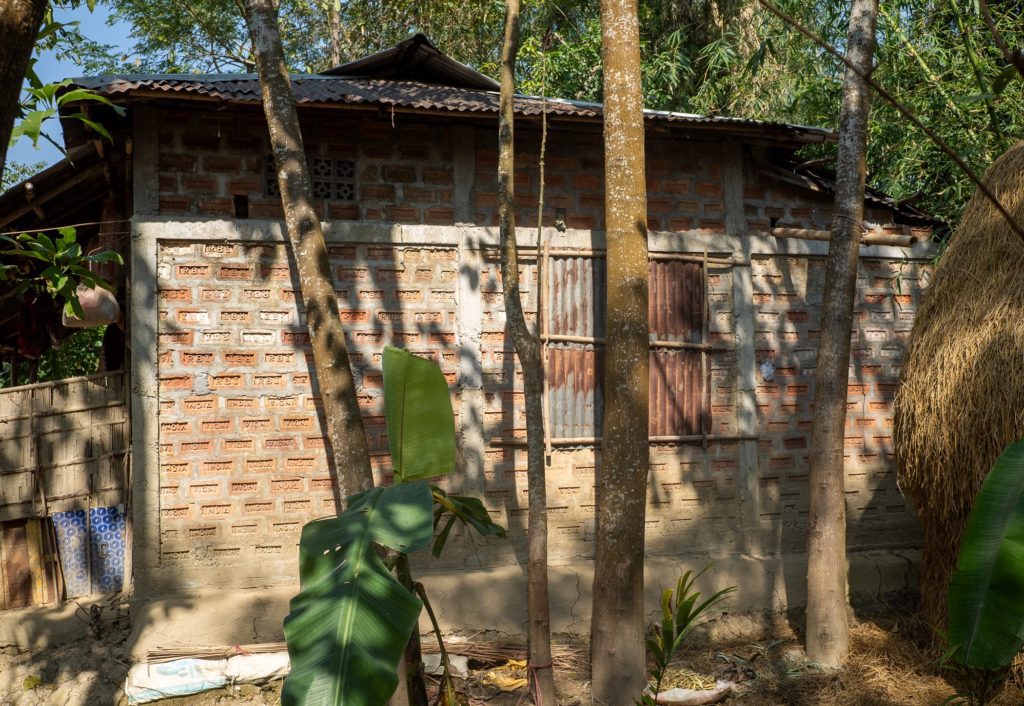
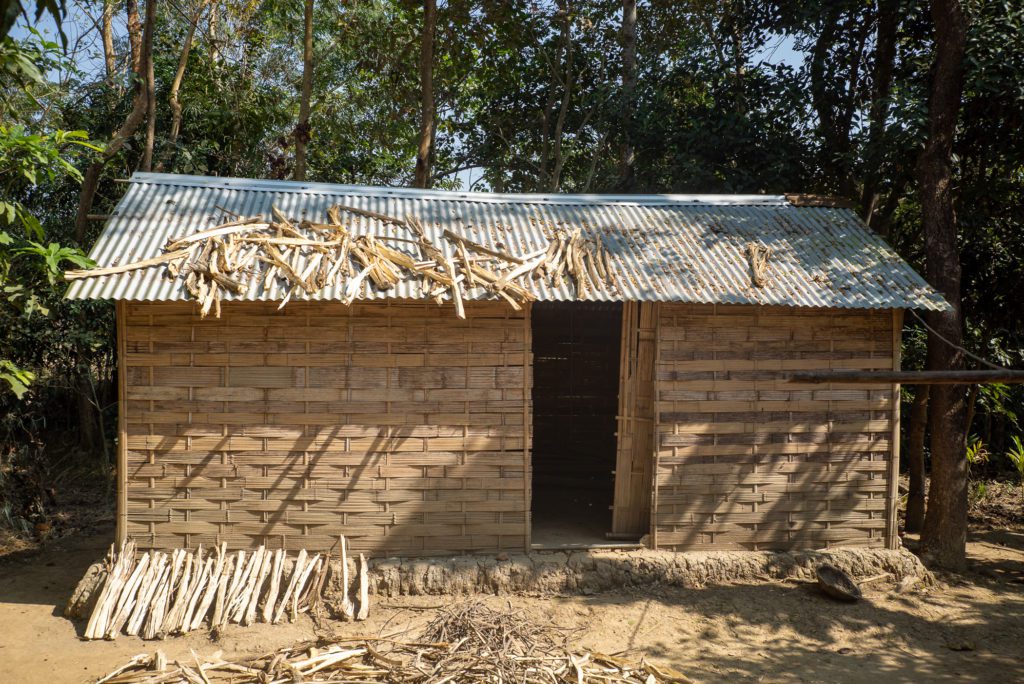
They have repurposed the shelter from Better Shelter into a shed for their goats and poultry, which provide the family with eggs and milk.
Two of the couple’s sons, aged 22 and 21, live nearby. They are daily wage workers at an automobile parts factory and have families of their own. Meanwhile, the youngest son, 15, remains at home, apprenticing at an automobile garage.
In this region, marginalised communities grapple with economic disparity, limited access to education and healthcare, social discrimination, land rights issues, displacement, and inadequate political representation. Many live in poverty due to educational and vocational limitations. Groundwater, the primary water source, is often contaminated with arsenic and other pollutants, posing significant health risks.
Despite this, Md. Niyazuddin is thankful for what he has.
“My wife and I are retired, although we would like to work but, at our age, it is difficult to find jobs. We do not have the same opportunities as younger people. I have many challenges but want to focus on the good things. I don’t need much other than having my basic needs met.”
Md. Niyazuddin
